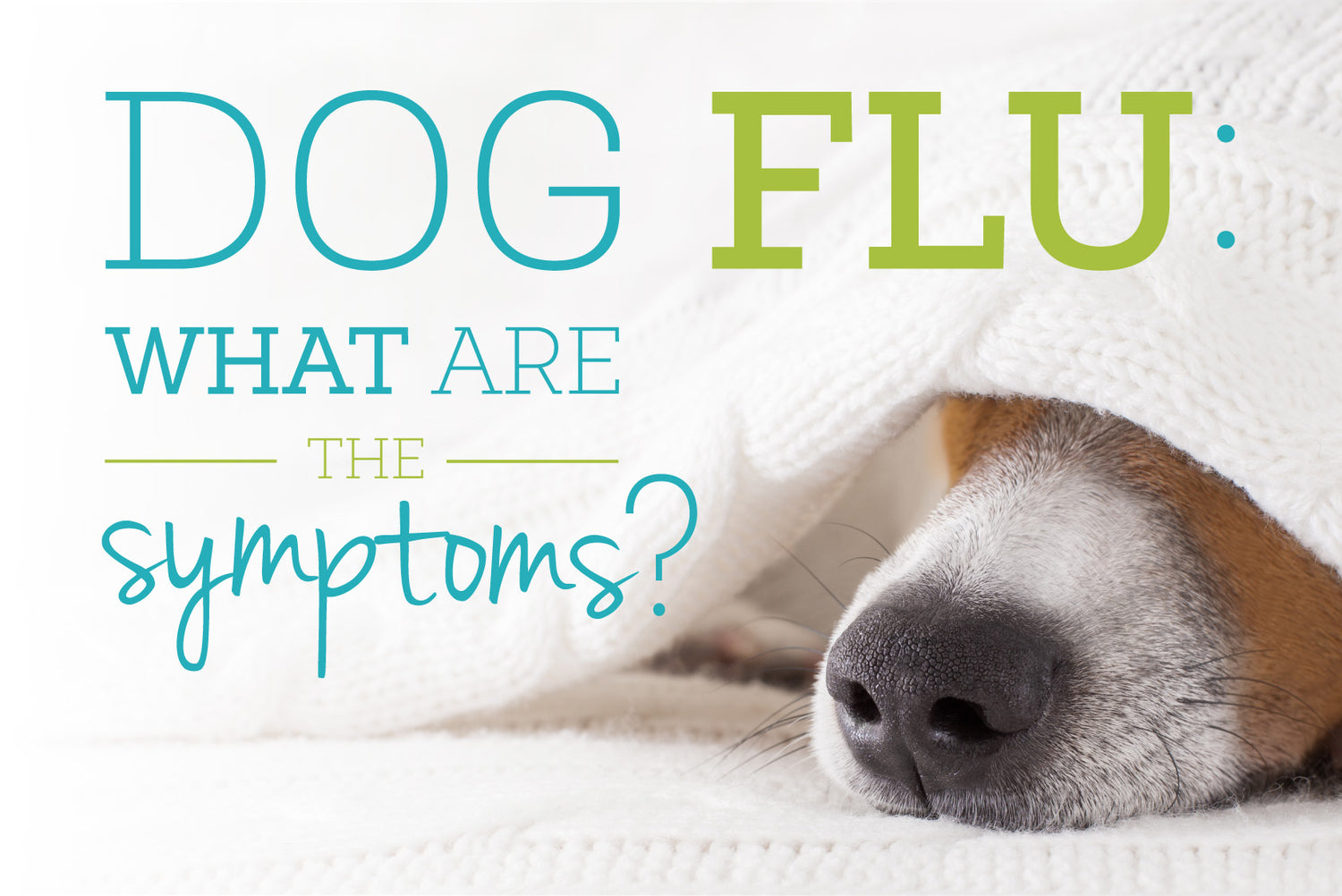Is dog flu really a thing?
Unfortunately, yes. And just like in humans, the flu can make dogs sick … really sick.
Knowledge is power when it comes to protecting your pet. So keep reading for everything you need to know about dog flu, including which dog flu symptoms to be on high alert for.
What Exactly IS Dog Flu … And Where Did It Come From?
Dog flu (aka “canine influenza”) is a highly contagious respiratory disease caused by an influenza A virus. There are two strains of the virus: H3N8 and H3N2.
The H3N8 strain originated in horses, then jumped species and spread to dogs. The first reported outbreak occurred in 2004 when greyhounds at a racetrack in Florida became ill. Today, H3N8 is considered a canine-specific virus.
H3N2 originated in Asia, where the virus jumped from birds to dogs. It’s suspected that the virus was introduced to the U.S. from dogs that were rescued and brought over here. This strain of dog flu hit the Midwest in 2015 and spread from there. To date, dog flu has been reported in 46 states.
6 Quick Facts About Canine Influenza
- Can be spread year-round
- More dangerous for puppies and older dogs
- Most cases are mild – less than 10 percent of cases are fatal
- 2 in 10 dogs with the flu will show NO symptoms
- Dog flu reported in 46 different states
- Highly contagious among dogs: spreads through sneezing, coughing, barking or via shared toys/water bowls
Be On Alert for These Dog Flu Symptoms
Unlike humans where we have a specific flu season each year, dogs can get hit by the flu year-round. Dogs infected with the flu virus will show symptoms 2–3 days after exposure.
Warning signs to watch out for:
- Coughing – both moist and dry
- Runny nose
- Sneezing
- Fatigue
- Loss of appetite
- Runny or red eyes
- Fever
- Trouble Breathing
Dog flu symptoms can range from mild to severe and will usually last 10–30 days. Severe symptoms that should be considered an emergency are high fever, coughing up blood and trouble breathing.
Surprisingly, 20 percent of dogs with the flu will not display any symptoms at all (but they will still be contagious).
Dogs with those adorable “smushed up” faces, such as bulldogs, boxers and pugs, will often have a tougher time coping with flu symptoms, as their flat faces make it harder to breathe as it is. Dog flu is also more dangerous for puppies and older dogs.
Keep in mind, dog flu symptoms can mimic other respiratory health conditions, including kennel cough, so it will take a trip to the veterinarian to determine if your dog does indeed have the flu.
TIP: Call and make a scheduled appointment with the veterinarian (unless it’s an emergency) and don’t do “walk-in” hours. Because the dog flu virus is so contagious, your vet will want to take precautions to avoid exposing your pet to other animals.
How Long Is Dog Flu Contagious?
How long your dog is contagious depends on the type of flu strain it has:
- H3N8: contagious for 10 days after exposure
- H3N2: contagious for 26 days after exposure
If your dog has the flu, you can easily spread the virus. The canine flu virus can survive on the skin for 15 minutes and 24 hours on clothes and hard surfaces.
Make sure you’re washing your hands really well after petting your sick dog and changing your clothes if you’ll be around other animals.
What If You Have Other Pets in the Home?
Odds are, they’ve already been exposed to the flu virus, as by the time the sick dog shows symptoms, their most contagious period has already passed.
Still, it’s best to limit interaction with other pets if one has the flu. That means no sharing dishes, blankets, hangout spots or playing/walking together. Learn more about quarantining your pet. (Truly, it doesn’t have to be as heartless as it sounds.) You’ll want to be hyper-vigilant about this if you have a puppy in the home or an older pet with current health problems.
Can cats get “dog flu”? As of right now, there’s no evidence that the H3N8 strain can spread from dogs to cats. The H3N2 strain, however, has infected cats, but these cases are extremely rare. (P.S. In case you’re wondering, humans can’t get either strain of dog flu.)
How to Prevent Your Dog from Getting Canine Influenza
If you know dog flu is going around in the area where you live, it’s wise to be an overprotective pet parent and simply keep your dog away from community places like dog parks, kennels, grooming facilities and doggy daycare.
If your dog is exposed to the flu virus, the odds of your dog catching it are close to 100 percent. (But remember – 20 percent of dogs show no symptoms at all.)
There are dog flu vaccines available for each strain. Talk to your vet to see if this is a good option for your pet. Often, it’s just recommended if dog flu is circulating in your area or if your lifestyle requires frequently boarding/daycare for the dog.
How Do You Treat Dog Flu?
If your dog has flu-like symptoms, make an appointment with your vet right away. For mild flu cases, your dog will most likely just need extra fluids, rest and TLC from his favorite person in the world (YOU). If the dog’s flu is severe, your vet will recommend a proper treatment plan based on your pet’s symptoms.
Sharing is caring. Help protect your friends’ pets from dog flu by sharing this post.
P.S. Did you know? Sometimes the flu can hurt a dog’s mouth.
If your dog’s flu symptoms include vomiting and coughing, this can really sting and inflame their delicate gum tissue.
For the ultimate TLC, give your pup Oxyfresh Pet Dental Gel. It’s so easy to use … just apply right to the gum line with your finger.
Unlike commercial brands that often contain alcohol and harsh flavorings, this gentle gel is free of alcohol and other ouch-inducing ingredients.
Aloe and chamomile bring speedy comfort to the gums, while Oxygene® neutralizes harmful bacteria and deodorizes the mouth.
Pamper your dog’s sore gums with the ultimate dental gel. Your dog will thank you!





